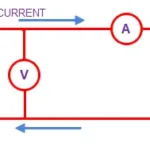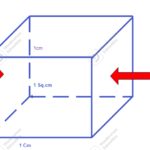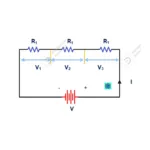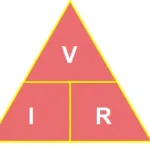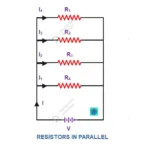As we know that electricity plays vital role in modern universe. The electricity flow from one place to another place with respect to time said as electric current. According to its nature of flow through a medium, it can be classified into two categories,
- Alternating current
- Direct Current
Direct current (DC)
Direct current is said as when current has constant magnitude and does not change its direction with respect to time. The below image shows graphical representation of direct current.

Alternating current (AC)
Alternating current is said as when current changes its magnitude along with its direction with respect to time. Each changes called as cycle. An alternating current can pass n-number of cycles in one second. Each cycle contains two half cycle (positive and negative). In positive half cycle current magnitude increase towards positive direction (above zero). In other hand negative half cycle magnitude increases in negative direction (below zero). Increase of magnitude with direction depend on shape of the AC wave form (formation of cycle). In below figure shows waveform of alternating current.
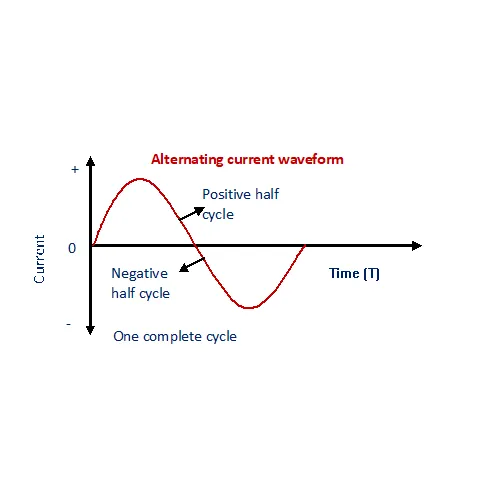
Advantages of Alternating current
Alternating current is being used popularly, because of its advantages over Direct current as listed below,
- Since its voltage magnitude can be increased or decreased as per our requirement using transformers. In DC it is most difficult to change magnitude and it is not so economical.
- AC generating machine is very simple and robust in construction. It can be rotated in very large speed. But DC machine has complicated construction like armature, commutators it is very difficult to run on above certain speed. So Energy generation cost becomes low using AC Generator.
- In line voltage drop is proportional of electric current flowing through it. By increasing AC voltages to high, electric current is gradually reduced. Hence very less current allowed to pass through transmission line. Since transmission losses increases, it increases transmission efficiency.
- AC motors are very simple in construction, cheaper cost than DC motor.
- AC motor requires less maintenance than DC motor.
- An AC supply can be easily converted into DC supply using rectifier unit wherever its required. But to convert DC supply to AC it is very critical arrangement required such storage battery, inverter etc.
Even DC supply has above disadvantages, it also has some advantages too,
- To transmission of DC supply less conductor required.
- We cannot store Alternating supply. But DC supply can be used in battery it can be used further.
- Some application such electrolysis, where precise speed control system is required DC motors are more suitable for it than a AC motor. Because precise speed control is not possible using AC motor.
Application
DC Current
- Electrolysis and electro plating
- Traction system
- EV charging stations
- Telecommunication lines
- Modern electrical protection systems
AC Current
- In industrial and commercial units run AC motors, lighting systems, fans etc.
- In home lighting systems, fans, refrigerators, etc.

